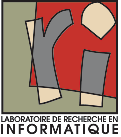A simple genetic algorithm for the optimization of multidomain protein homology models driven by NMR residual dipolar coupling and small angle X-ray scattering data.
Résumé
Most proteins comprise several domains and/or participate in functional complexes. Owing to ongoing structural genomic projects, it is likely that it will soon be possible to predict, with reasonable accuracy, the conserved regions of most structural domains. Under these circumstances, it will be important to have methods, based on simple-to-acquire experimental data, that allow to build and refine structures of multi-domain proteins or of protein complexes from homology models of the individual domains/proteins. It has been recently shown that small angle X-ray scattering (SAXS) and NMR residual dipolar coupling (RDC) data can be combined to determine the architecture of such objects when the X-ray structures of the domains are known and can be considered as rigid objects. We developed a simple genetic algorithm to achieve the same goal, but by using homology models of the domains considered as deformable objects. We applied it to two model systems, an S1KH bi-domain of the NusA protein and the gammaS-crystallin protein. Despite its simplicity our algorithm is able to generate good solutions when driven by SAXS and RDC data.
| Origine | Fichiers produits par l'(les) auteur(s) |
|---|



